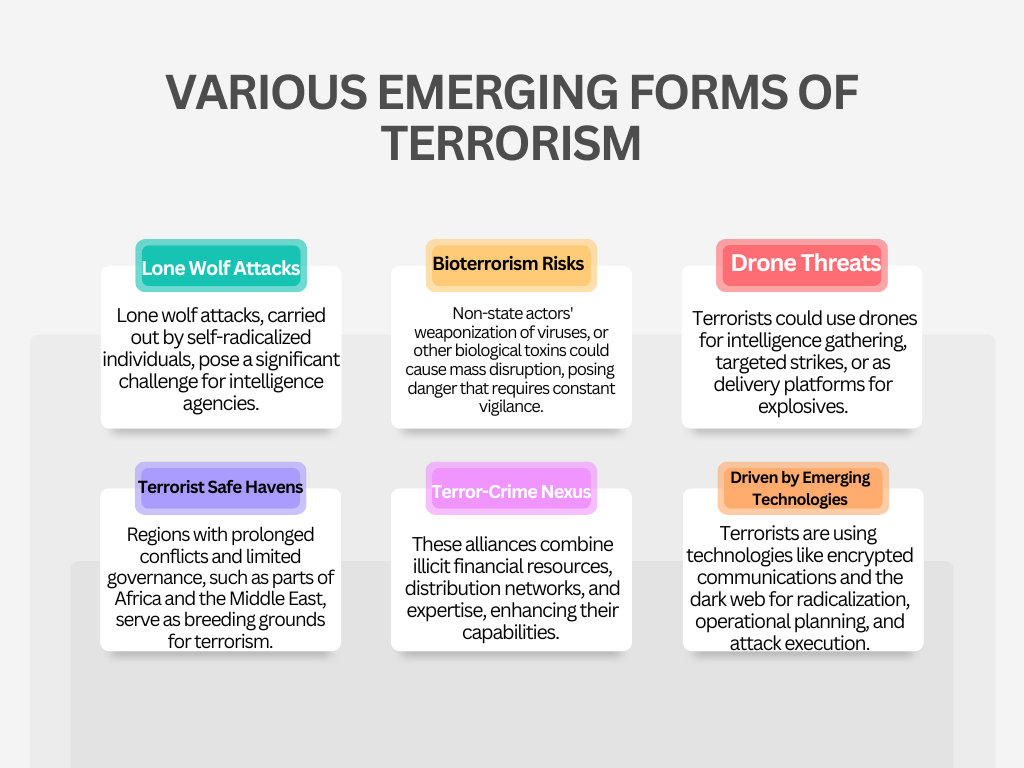The recent terror attack in Reasi, Jammu, and Kashmir, brings into stark focus the fragile peace in the region. Despite efforts at maintaining security, skirting incident after incident, the latest incident underlines the challenges that remain. The complex fight against terrorism in India requires a multi-faceted approach: strong security measures interwoven with addressing the root causes.
Origin of the Article
This editorial is based on “Terror attack in Reasi underscores the fragility of a hard-won peace in J&K,” published in The Indian Express on 12/06/2024. The article discusses the ongoing security challenges in Jammu and Kashmir.
Relevancy for UPSC Students
For UPSC students, understanding the complexities of terrorism in India is crucial. It is directly relevant to topics in GS Paper 3, such as internal security and challenges through communication networks. Knowledge of India’s counter-terrorism measures and policies will aid in essay writing and interview discussions.

Why in News
The recent terrorism in Jammu, and Kashmir, underscores the fragility of peace in the region, making it a critical topic for UPSC aspirants. Understanding India’s internal security dynamics, including counter-terrorism strategies and the challenges posed by cross-border terrorism, aligns with the UPSC syllabus, particularly GS Paper 3. Previous UPSC questions have explored terrorism’s impact on national security, making this topic highly relevant for exam preparation.
What is the Framework Related To Terrorism in India?
India has established a robust legal and institutional framework to combat terrorism, despite the absence of a universally accepted definition of terrorism. This lack of consensus complicates global counter-terrorism efforts, providing loopholes for terrorists and enabling some countries to veto critical actions in international forums.
About
Terrorism is defined as the deliberate and unlawful use of violence and intimidation, especially against civilians, to instill fear and achieve political, religious, or ideological goals. India maintains a “zero tolerance” policy towards terrorism. However, the absence of a universal definition complicates the classification of specific activities as terrorist acts, giving terrorists an advantage.
Domestic Laws
India has enacted key laws to combat terrorism. The Unlawful Activities (Prevention) Act (UAPA) of 1967 designates terrorist organizations or individuals and criminalizes terrorist activities. The National Investigation Agency (NIA) Act of 2008 establishes a central agency for investigating and prosecuting terror-related offenses.
Institutional Framework
Several key institutions coordinate India’s counter-terrorism efforts. The National Security Council Secretariat (NSCS) oversees national security strategies. The Ministry of Home Affairs (MHA) leads domestic counter-terrorism operations and intelligence gathering. The National Investigation Agency (NIA) investigates and prosecutes major terror-related cases.
International Agreements
India is a signatory to various international conventions against terrorism, including the Convention on the Prevention and Punishment of Offences against Internationally Protected Persons (1973), the International Convention against the Taking of Hostages (1979), and the International Convention for the Suppression of the Financing of Terrorism (1999).
What are the Various Emerging Forms of Terrorism?
Terrorism is evolving, with new forms and tactics continually emerging, making the fight against it increasingly complex. This adaptability demands constant vigilance and innovative countermeasures.

Lone Wolf Attacks
Lone wolf attacks, carried out by self-radicalized individuals, pose a significant challenge for intelligence agencies. These terrorists are difficult to detect and can strike with minimal warning, making prevention and intervention more challenging.
Bioterrorism Risks
The COVID-19 pandemic has highlighted the potential threat of bioterrorism. Non-state actors’ weaponization of viruses, bacteria, or other biological toxins could cause mass disruption, posing a significant danger that requires constant vigilance.
Unmanned/Drone Threats
The proliferation of commercial drone technologies has introduced new security challenges. Terrorists could use drones for intelligence gathering, targeted strikes, or as delivery platforms for explosives, as seen in the Jammu Air Force Station attack in June 2021.
Terrorist Safe Havens
Regions with prolonged conflicts and limited governance, such as parts of Africa and the Middle East, serve as breeding grounds for terrorism. These areas provide safe havens for terrorist groups, enabling them to train and expand their operations.
Terror-Crime Nexus
The collaboration between terrorist groups and organized crime syndicates is a growing threat. These alliances combine illicit financial resources, distribution networks, and expertise, enhancing their capabilities. For instance, the drug supplies in Punjab illustrate this dangerous nexus.
Terrorism Driven by Emerging Technologies
Terrorists are increasingly using advanced technologies like encrypted communications and the dark web for recruitment, radicalization, operational planning, and attack execution. Counterterrorism forces must stay ahead in this technological battle.
What are the Major Terrorism Related Challenges that India Faces?
India faces numerous terrorism-related challenges, both domestic and cross-border, necessitating a comprehensive and adaptive approach to counter them.
Cross-border terrorism
India grapples with terrorism originating from neighboring countries, particularly Pakistan. Incidents like the 2019 Pulwama attack and the recent Reasi attack in June 2024 highlight the ongoing threat and the shifting focus of terrorist activities.
Left-Wing Extremism (LWE)
The Naxalite insurgency remains a persistent challenge in states like Chhattisgarh and Jharkhand. Despite a reduction in violent incidents, the movement continues to engage in violence and extortion, disrupting development projects.
Separatist Movements and Militancy
India faces separatist movements and militancy in regions like the Northeast, Punjab, and Jammu and Kashmir. Pakistan-based groups like Lashkar-e-Taiba (LeT) and Jaish-e-Mohammed (JeM) continue to fuel the insurgency in Jammu and Kashmir.
Radicalization and Online Propaganda
The radicalization of youth through online platforms and social media is a significant challenge. Incidents like the honey trapping of a BrahMos engineer and the February 2024 arrests highlight the growing threat of online extremism.
Cyber Terrorism
The increasing reliance on digital infrastructure makes India vulnerable to cyberterrorism. Potential attacks on critical infrastructure, financial systems, and sensitive data pose significant risks, as evidenced by the recent data breach by a Chinese firm.
Pakistan Exiting FATF Grey List
Pakistan’s exit from the FATF grey list reduces the international pressure on it to act against terror groups. This development, coupled with China’s support for Pakistan, complicates India’s efforts to highlight Pakistan’s role in terrorism.
What Measures Can India Adopt to Curb the Menace of Terrorism?
A holistic approach involving various strategies is essential for India to effectively curb terrorism. These measures should address both immediate threats and underlying causes.
Focus on Rehabilitation, Not Just Punishment
Developing deradicalization programs is crucial. These programs should address the root causes of radicalization and provide opportunities for rehabilitation and reintegration into society, focusing on individuals in the early stages of radicalization.
Establishing a National Counter-Terrorism Database
A centralized intelligence database integrating data from various agencies can enhance counter-terrorism efforts. Leveraging advanced data analytics and machine learning can help identify patterns, connections, and potential threats.
Enhancing Physical Security Measures
Improving physical security in critical infrastructure and public spaces is essential. Regular security audits, surveillance systems, and robust crisis management protocols can help mitigate the risks of terrorist attacks.
Open-Source Intelligence Training for Police
Training police forces in open-source intelligence (OSINT) techniques can enhance their ability to analyze publicly available data on social media and online forums, helping to identify potential threats and track terrorist activities.
Strengthening Cybersecurity and Online Counterterrorism Capabilities
Investing in advanced cybersecurity measures is crucial to protect against cyber attacks and digital espionage. Strengthening online counterterrorism capabilities can help safeguard critical infrastructure and sensitive data.
Empowering Communities, Not Just Security Forces
Educating communities about early signs of radicalization and addressing socio-economic grievances is vital. Programs like Himayat, UMEED Scheme, and Khelo India Centres can help redirect youth and create hope, reducing the appeal of radicalization.
Weakening the Financial Lifeline of Terror
Using blockchain technology to track financial transactions can enhance transparency and prevent terrorist funding. The immutability of blockchain can make it harder for terrorists to move funds, disrupting their financial lifeline.
Conclusion
In conclusion, combating terrorism in India requires a well-rounded strategy that goes beyond mere security measures. Addressing underlying socio-economic grievances, enhancing intelligence capabilities, and fostering community resilience are crucial for sustained peace. As future civil servants, understanding and engaging with these multifaceted challenges will be essential to shaping a secure and harmonious India.
| UPSC Civil Services Examination, Previous Year Questions (PYQs) Mains Q. The persisting drives of the Government for development of large industries in backward areas have resulted in isolating the tribal population and the farmers who face multiple displacements. With Malkangiri and Naxalbari foci, discuss the corrective strategies needed to win the Left Wing Extremism (LWE) doctrine affected citizens back into the mainstream of social and economic growth.” (PYQ- 2015). Q. Examine the role of international conventions, such as the International Convention for the Suppression of the Financing of Terrorism (1999), in India’s strategy to combat terrorism. How effective has India’s cooperation been with international bodies like the Financial Action Task Force (FATF) in this regard? |

